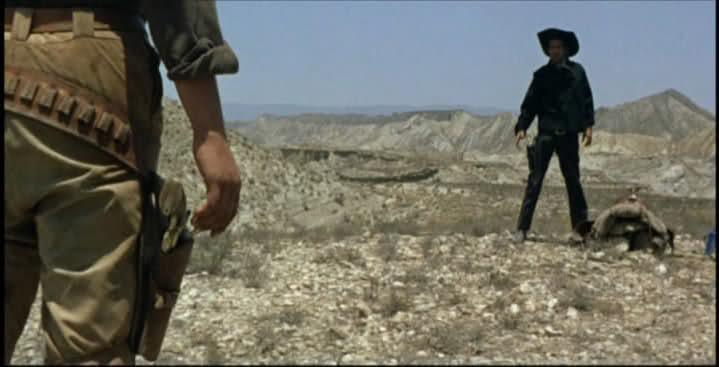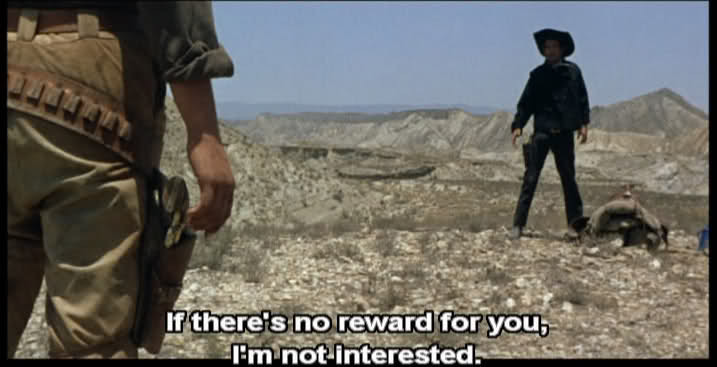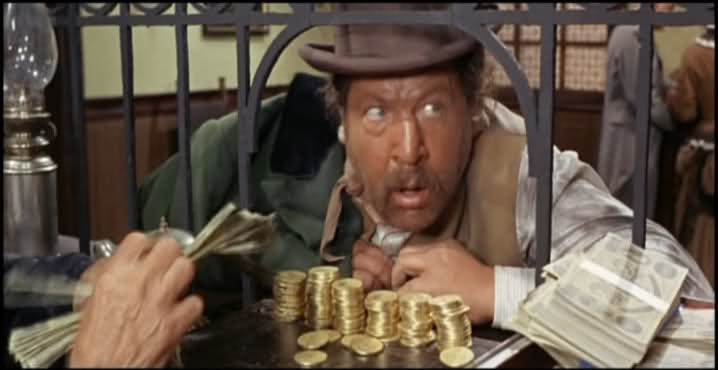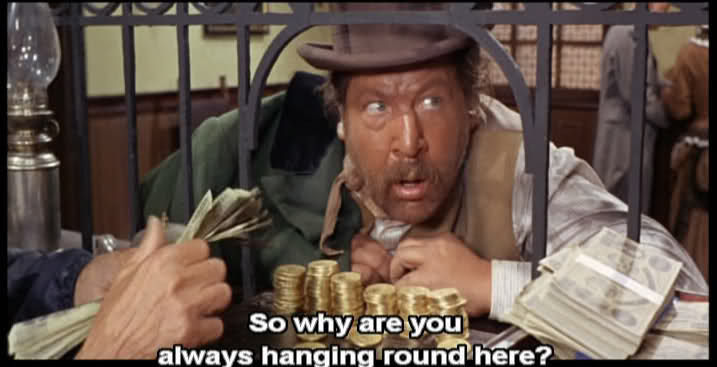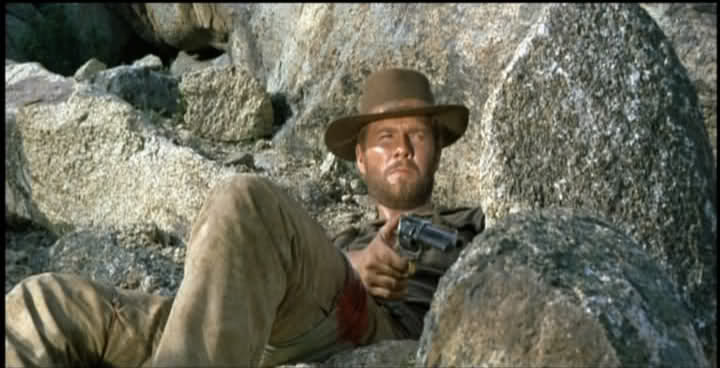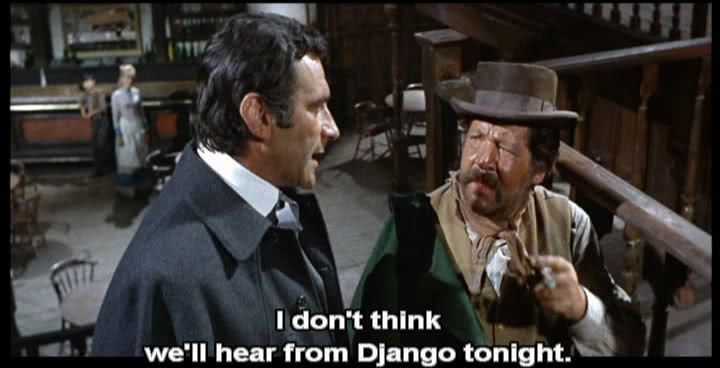In the background we spot a lone rider, in the foreground the barrel of a gun. Having seen For a few dollars more, we expect to hear a shot. But what looked like a barrel, turns out to be a piece of wood. It’s the first in a series of references to Leone, most of them with an added comical twist. The luckiest strike is a Colonel Mortimer-like character, who seeks revenge on his own wife (!) It will be clear that this movie doesn’t take itself too seriously (we even see the main character in women’s clothes!), still it’s not a neat comedy : made during the heydays of the genre, the violence is quite potent and the protagonist behaviour sometimes downright amoral. The tone is immediately set in the opening scene. The lone rider we spotted in the background, is invited by Django (Saxson) to sit down at his camp fire. He is a bounty killer and his victim is a man called Garvin. In this film Django’s real name is Garvin too, and the dead man is his father. So Django shoots the bounty killer, takes his father’s body into town, and collects the bounty himself! In town he is told by the local weirdo Gordon (who likes the smell of money so much he preferably hangs around in the local bank) that he has become the co-owner of both the bank and the saloon. It soon becomes clear that his father was framed by his business partner Kluster, who now wants to get rid of the son …
Clearly re-titled to cash in on Corbucci’s landmark movie, the character played by Saxson (in real life Dutch producer/actor Roel Bos) has little in common with the legendary avenger with a machine gun hidden in his coffin. His is a rather cheerful guy with a keen eye for the ladies, closer to Gemma’s Ringo than Nero’s Django. Although his father’s death sets things in motion, he can hardly be called an avenger. In fact he must defend himself almost constantly, first in a series of rumbustious fistfights with Kluster’s henchmen, later in protracted shoot out in which he is severely wounded (if only for a few hours). The storyline brings De Martino’s film more into line with the so-called ‘populist’ spaghetti westerns, in which the protagonist takes on one or more corrupt dignitaries, reflecting the popular Italian belief that no dignitary can ever be trusted (tutti ladri = all thieves). Those type of westerns also reflect the opposition between the relatively backward, rural South and the more sophisticated, urbanized North. This idea is cleverly symbolized by the film’s magnificent costume design: Django wears the worn-out outfit of the countryman, while in town people wear the most impressive costumes ever seen in a spaghetti western: not only Kluster and his wife look ultra-chic, even Kluster’s henchman is well-dressed and Sancho looks as if he’s preparing for the catwalks of Milan.
Saxson lacks the charisma of a Nero of a Gemma, but makes this up with a laconic acting style that comes close to self parody. Excellent support is given by Sancho, in a rare performance as the hero’s comical side-kick, and Galli/Stewart, as the evil woman who seduces (and nearly ruins) every man she meets. The script is more elaborate than usual, but rather inconsistent, juxtaposing violent scenes with comedy scenes that flirt with slapstick. De Martino makes excellent use of the widescreen, especially during the film’s best scene, set among grass-grown rocks, when the four main characters approach the camera from different angles. Enzo Girolami (Castellari) was assistent-director, and it wouldn’t surprise me if he was responsable for those rumbustious fistfights. Bruno Nicolai score is good without being outstandig.
Conclusion: Until recently, Django spara per primo was a relatively unknown spaghetti western, but it has attracted some attention thanks to a Canal + owned print, that was shown on German television and was also used for the British Cinema Club DVD release. It’s not one of the Great Spaghettis; the film simply is too much of a hodgepodge to make a lasting impression, still it certainly is worth a look for genre fans. And don’t miss that hilarious last scene, in which George Eastman arrives in town and - mirrorring Saxson’s arrival - introduces himself as … well, see for yourself.
For more info visit:
Database page: Django spara per primo - The Spaghetti Western Database
- 5
- 4
- 3
- 2
- 1
0 voters



 He didn’t bother me, but was also ‘too much Hollywood’ here. I think this was the boy who also played the outcast Mexican kid in Face To Face, the one who gets shot during the bank robbery.
He didn’t bother me, but was also ‘too much Hollywood’ here. I think this was the boy who also played the outcast Mexican kid in Face To Face, the one who gets shot during the bank robbery.